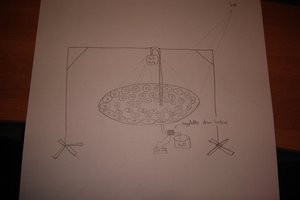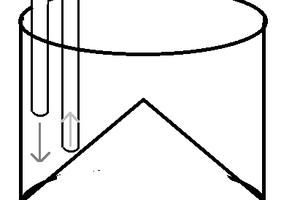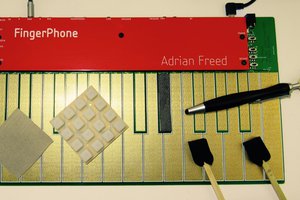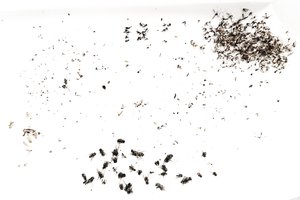Don't forget to follow me on Twitter: @SteveSchuler20
For this build I'm using the tripod stand from the Thames and Kosmos Chem C3000 chemistry set.
Titration is the process of determining the unknown concentration of a solution by adding a known amount of a solution with a known concentration. For example, in an acid-base titration, you can determine the unknown concentration of an acid in a solution by adding a base solution of known concentration. There are a number of web pages that demonstrate this process that you can reference. To demonstrate how phenolphthalein solution reacts to acids and bases, you can use ordinary household ammonia and white vinegar.
Parts needed:
Goggles (to protect your eyes from splashes)
Disposable gloves (vinyl, latex, or nitrile)
Protective clothing (lab coat, or clothes that you would wear when using ammonia for cleaning)</p><p>
Tripod stand from Thames and Kosmos kit
Test tube holder from Thames and Kosmos kit
Serological pipette (5 ml or 25 ml)
Solder sucker bulb (if you prefer, you can use a pipette pump or pipette bulb)
3 250 ml beakers
1 250 ml Erlenmeyer flask
Eyedropper
Distilled or deionized water
Household ammonia
White Vinegar
Phenolphthalein solution
Wear protective clothing, goggles, and gloves. Pour 150 ml of distilled or deionized water in the Erlenmeyer flask. Use the eye dropper to add four drops of phenolphthalein solution to the beaker. Add 50 ml of ammonia to the one of the beakers and 50 ml of vinegar to the second beaker. The third beaker contains distilled or deionized water to rinse the Serological pipette.
Remove the tip from the solder sucker bulb and attach the bulb to the top of the pipette (the cylinder with the cotton plug). Use the test tube holder to attach the pipette to the tripod stand.



 Thames and Kosmos tripod stand, test tube holder, 25 ml serological pipette with solder sucker bulb attached, and Erlenmeyer flask.
Thames and Kosmos tripod stand, test tube holder, 25 ml serological pipette with solder sucker bulb attached, and Erlenmeyer flask.
I find it easier to use the 25 ml pipette. With the 5 ml pipette, you have to be careful not to squeeze the bulb too hard and draw too much liquid into the pipette. You only need small amounts of ammonia or vinegar to demonstrate the phenolphthalein solution color change. Nonetheless, it's an excellent opportunity to practice using the lab ware for titration experiments.
Draw a small amount of ammonia into the pipette then set the beaker of ammonia aside and slowly add the ammonia to the Erlenmeyer flask with the 150 ml of water and phenolphthalein solution (swirl the liquid in the flask if needed). With the 25 ml pipette I counted 13 drops per milliliter; you shouldn't have to use a full milliliter to turn the phenolphthalein magenta. Squeeze the remaining ammonia out of the pipette back into the beaker of ammonia. Rinse the pipette with the distilled water.
Next, draw a small amount of vinegar into the pipette. Then set the beaker of vinegar aside. Slowly add the vinegar to the Erlenmeyer flask with the 150 ml of water, ammonia, and phenolphthalein solution, drop by drop, until the liquid becomes colorless again (swirl the liquid in the flask if needed).
Rinse the pipette with distilled water.
This is a simple demonstration of how to use the home made titration lab ware and how phenolphthalein solution reacts in the presence of acids and bases. Dispose of the vinegar, ammonia, and your experiment solution as you normally would dispose of household ammonia and vinegar according to the requirements of your local area.
 Steve Schuler
Steve Schuler


 Adrian Freed
Adrian Freed
 Yibo Fan
Yibo Fan